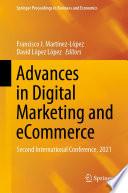
Developing Global Leaders
Insights from African Case Studies
This book is a timely guide on what constitutes effective leadership in Africa. It explores how today’s leaders in Africa perceive their role, the challenges they experience, and how they operate effectively as leaders. In the era of globalization, there is an increasing need to offer guidance on how leaders can adjust their leadership style to suit situational contexts. Drawing on case study and survey data, this book illustrates to scholars and leaders worldwide the vision of leadership that is emerging in Africa. It will contribute to the development of a new community of global leaders, integrating cutting-edge knowledge on leadership development in Africa.
- ISBN 13 : 3030146065
- ISBN 10 : 9783030146061
- Judul : Developing Global Leaders
- Sub Judul : Insights from African Case Studies
- Pengarang : Eva Jordans, Bettina Ng’weno, Helen Spencer-Oatey,
- Kategori : Business & Economics
- Penerbit : Springer Nature
- Bahasa : en
- Tahun : 2019
- Halaman : 367
- Google Book : https://play.google.com/store/books/details?id=XifHDwAAQBAJ&source=gbs_api
-
Ketersediaan :
Retrieved from https://www.ccl.org/wp-content/uploads/ 2018/02/The-Global-Asian-Leader-Research-Report.pdf DeKrey, S.J., Messick, D. M., ... Fred Swaniker has grand plans to grow Africa's next generation of leaders, Interview.









